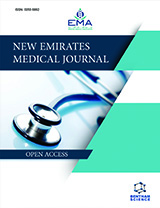Abstract
Background: The COVID-19 pandemic has dominated the last two years of the life of young individuals in every aspect. Medical illness associated with COVID-19 is only one element of the detrimental impact that it has had. The psychological, educational, and social aspects of lives of young individuals have been affected with potentially far-reaching effects. The aim of this review is to determine the negative impact of COVID-19 in each of these areas and inform future practices or policies on the management of young individuals impacted by COVID-19 or future pandemics of this magnitude.
Methods: We have collated and analyzed data available on the psychosocial, educational, and social aspects of young individuals in an attempt to understand the negative impact of COVID-19 on this group. Data was collected from an extensive Medline search of relevant articles relating to the effect of COVID-19 on individuals less than eighteen years.
Results: Our results show that although young individuals experienced a milder form of COVID-19 in the pandemic, conditions, such as anxiety, depression, and loss of routine, have caused considerable comorbidities in this population. Young individuals have also experienced a greater rise in obesity and a higher incidence of myopia. A key finding of this review showed that children with special needs experienced a lack of continuity of care. Additionally, distant and digital learning presented challenges for children from different backgrounds. Concerns regarding wider issues, such as finance, have also directly impacted young individuals. Vaccination for COVID-19 among children has also raised important ethical issues.
Conclusion: COVID-19 has negatively impacted the psychological, physical, and emotional needs of young individuals with potentially far-reaching consequences. A combined psychosocial and clinical approach to tackling the specific needs of young individuals is essential to support the needs and management of individuals affected by the pandemic. The findings of our review recommend measures to include balancing screen time with outdoor activity and encouraging the continued education of children regarding good health practices and vaccination in particular. We hope that this will inform future practices or policies on the management of young individuals impacted by COVID-19 or future pandemics of this magnitude.
[http://dx.doi.org/10.1093/oxfordjournals.aje.a113356] [PMID: 7081204]
[http://dx.doi.org/10.1177/1535370220975118] [PMID: 33210552]
[http://dx.doi.org/10.1097/MOP.0000000000000978] [PMID: 33278108]
[http://dx.doi.org/10.1016/S0140-6736(20)30460-8] [PMID: 32112714]
[http://dx.doi.org/10.1016/j.obmed.2020.100282] [PMID: 32835125]
[http://dx.doi.org/10.1016/j.jfma.2020.02.009] [PMID: 32139299]
[http://dx.doi.org/10.1056/NEJMc2003717] [PMID: 32163697]
[http://dx.doi.org/10.24171/j.phrp.2020.11.2.05] [PMID: 32257774]
[http://dx.doi.org/10.1101/2020.04.17.20053157]
[http://dx.doi.org/10.1056/NEJMoa2006100] [PMID: 32289214]
[http://dx.doi.org/10.15585/mmwr.mm6939e2] [PMID: 33001869]
[http://dx.doi.org/10.2196/29049] [PMID: 34643535]
[http://dx.doi.org/10.3389/fped.2020.603741] [PMID: 33537264]
[http://dx.doi.org/10.1186/s13052-020-00844-1] [PMID: 32517815]
[http://dx.doi.org/10.1542/peds.2020-0702] [PMID: 32179660]
[http://dx.doi.org/10.1126/science.abd6165] [PMID: 32958582]
[http://dx.doi.org/10.3346/jkms.2020.35.e132] [PMID: 32233161]
[http://dx.doi.org/10.1200/EDBK_321497] [PMID: 33989020]
[http://dx.doi.org/10.3389/fnut.2021.756413] [PMID: 34778345]
[http://dx.doi.org/10.1002/pbc.29005] [PMID: 33719167]
[http://dx.doi.org/10.1016/j.encep.2020.05.011] [PMID: 32522407]
[http://dx.doi.org/10.1016/j.pnpbp.2020.110171] [PMID: 33186638]
[http://dx.doi.org/10.1001/archpsyc.62.6.593] [PMID: 15939837]
[http://dx.doi.org/10.1017/dmp.2013.22] [PMID: 24618142]
[http://dx.doi.org/10.1097/YCO.0000000000000423] [PMID: 29708895]
[http://dx.doi.org/10.1007/s12098-020-03347-3] [PMID: 32472347]
[http://dx.doi.org/10.1542/peds.2020-016824] [PMID: 32709738]
[http://dx.doi.org/10.1186/s12888-021-03213-2] [PMID: 33941119]
[http://dx.doi.org/10.1016/j.bbi.2020.05.061] [PMID: 32464156]
[http://dx.doi.org/10.1016/j.jpeds.2020.03.013] [PMID: 32248989]
[http://dx.doi.org/10.3200/JACH.56.44.437-444] [PMID: 18316289]
[PMID: 34899062]
[http://dx.doi.org/10.4161/derm.18250] [PMID: 22870351]
[http://dx.doi.org/10.7759/cureus.10051] [PMID: 32999774]
[http://dx.doi.org/10.3389/fpsyg.2020.01713] [PMID: 32719646]
[http://dx.doi.org/10.3389/fpsyg.2021.670722] [PMID: 34777082]
[http://dx.doi.org/10.1016/j.chb.2014.01.036] [PMID: 25717216]
[http://dx.doi.org/10.1001/jamapediatrics.2020.0327] [PMID: 32202633]
[http://dx.doi.org/10.1001/jamaophthalmol.2020.6239] [PMID: 33443542]
[http://dx.doi.org/10.1016/j.ypmed.2020.105988] [PMID: 31954142]
[http://dx.doi.org/10.1167/iovs.07-0804] [PMID: 18579757]
[http://dx.doi.org/10.1111/cxo.13092] [PMID: 32452059]
[http://dx.doi.org/10.1038/s41423-020-0401-3] [PMID: 32203186]
[http://dx.doi.org/10.3389/fpubh.2021.752323] [PMID: 34722451]
[http://dx.doi.org/10.1111/aos.13403] [PMID: 28251836]
[http://dx.doi.org/10.1001/jama.2015.10803] [PMID: 26372583]
[http://dx.doi.org/10.1016/j.ophtha.2020.01.054] [PMID: 32197911]
[http://dx.doi.org/10.3233/PRM-200769] [PMID: 33185616]




























